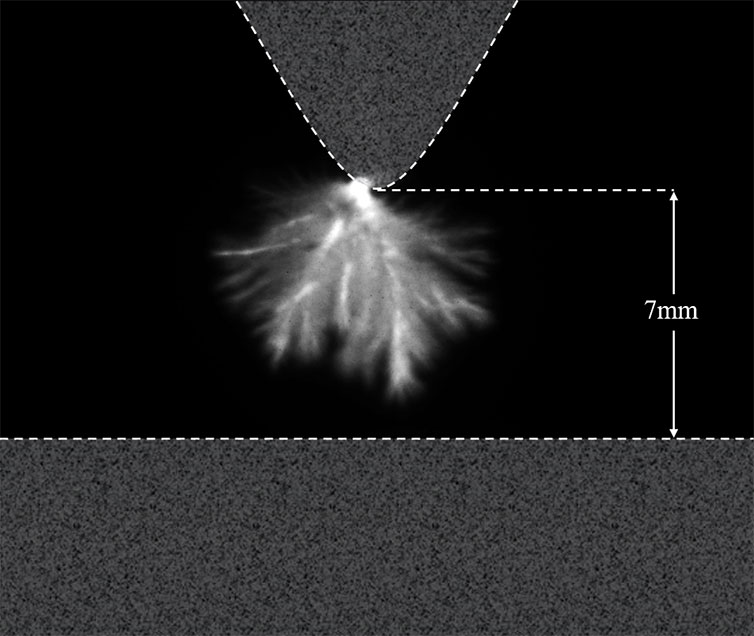Resources
 Part of the Oxford Instruments Group
Part of the Oxford Instruments Group
Expand
Collapse
 Part of the Oxford Instruments Group
Part of the Oxford Instruments Group
Challenge Background
Research grade iCCDs are used to sample in time and accurately reconstruct the chemical properties and distributions of transient plasma dynamics. Plasmas such as laser-induced, RF or inductively-coupled, Dielectric Barrier Discharge plasmas are studied in order to derive fundamental properties, such as, electron temperature and density. Importantly iCCDs can achieve temporal resolution that can effectively ‘freeze’ transient phenomenon at the nanosecond level via gating of an image-intensifier. Moreover, iCCDs can move this gate very precisely (<2 ns) in time to obtain consecutive, high accuracy snapshots of plasma behaviour and phases. In order to accurately image a rapidly transient phenomenon such as plasma there are several key experimental challenges that an imaging platform must overcome:

Figure 2: Plasma streamer dynamics of an underwater discharge observed using an Andor iStar sCMOS camera by Jessica Stobbs, Bucur Novac, Peter Senior at the Plasma and Pulsed Power Group, Loughborough University, UK
Current time gated technologies such as CCDs, Interline CCDs and EMCCD based cameras are limited by their poor frame rates and limited dynamic range. Slow frame rates can result in long experimental timescales. Furthermore, the limited dynamic range of these devices mean compromises must be made to simultaneously capture weak or bright optical signatures during an experiment.
Technology Solution
Gated intensified sCMOS cameras offer the ideal solution for plasma imaging. The coupling of an intensifier to a sCMOS camera combines the ultra-fast nanosecond time resolution of an intensifier tube with the high frame rate and dynamic range of sCMOS technology. Offering an ideal versatile solution for plasma imaging and diagnostics whilst affording high speed and dynamic range to minimise experimental time and avoid over saturation.
Andor Camera Solutions for Transient Plasma Imaging
Andor strongly recommends its cutting edge, rapid high dynamic range iStar sCMOS camera system for transient plasma imaging applications. The iStar sCMOS offers top of the market <2 ns gating speeds with a rapid 50 fps full frame with a high resolution 5.5-megapixel camera. The low noise readout (2.5 e-) coupled with a deep electron well depth allows enables 16-bit dynamic range. Additionally, frame rates of up to 4000 Hz can also be achieved in spectroscopy & crop modes making it also ideal for plasma spectroscopy applications such as Thomson Scattering, OES and LIBS. Andor also offers a range of intensified CCDs ideal for spectroscopy applications and slower imaging requirements.
A review of the key imaging requirements for plasmas and the iStar sCMOS:
| Key Requirement | Transient Plasma Imaging Solution: iStar sCMOS |
| Speed | The rapid frame rate enabled by the sCMOS technology of the iStar sCMOS makes it the ideal candidate for rapid plasma diagnostics with full frame rates of up to 50 fps, offering top of the line data acquisition rates whilst maximising experimental efficiency. Furthermore, through cropping or pixel binning modes this frame rate can be substantially increased up to 4008 Hz! |
| Time Resolution | The iStar sCMOS offers ultra-fast time resolved gating at speeds of <2 ns, this enables the capturing of even the most rapid plasma formation mechanisms. |
| Sensitivity | The intensifier of the iStar sCMOS is capable of single photon sensitivity with its in build configurable microchannel plate that amplifies the signal of incident photons to overcome the noise floor. A variety of intensifiers enables the optimisation of quantum efficiency and sensitivity depending on the wavelength range of interest. |
| Spatial Resolution | The large area 5.5 megapixel format of the iStar sCMOS camera enables the capture all of data with a high spatial resolution. |
| Dynamic Range | The iStar sCMOS offers a high dynamic range ideal for capturing both high and low intensity features of plasma formation all within the same image. Ideal for plasmas with an uneven light intensity distribution! |
Discover more about Andor solutions for imaging
Discover more about Andor solutions for spectroscopy
